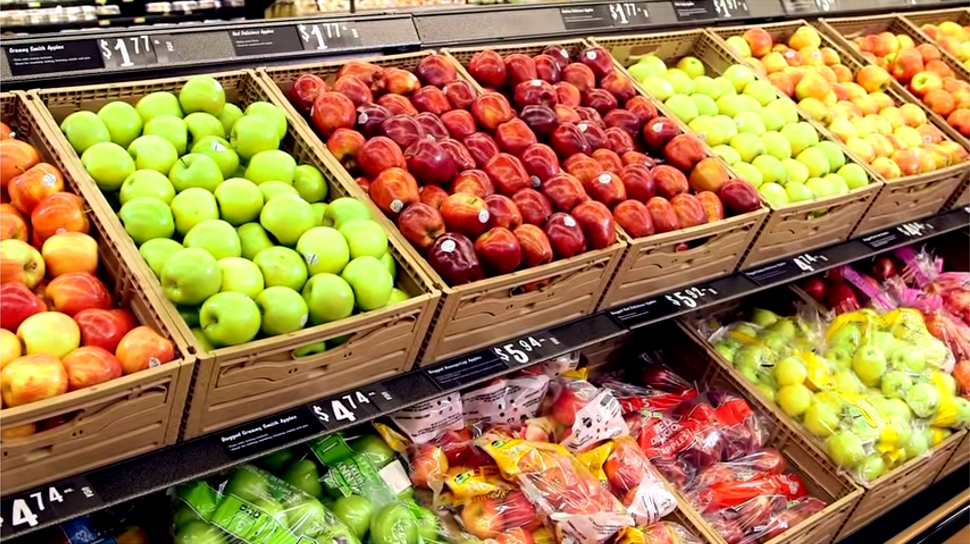Not to be confused with what happens to a wool sweater that mistakenly ends up in the hot wash or the slang term for psychologist, the term "shrink" has, as industry insiders are aware, a totally different context when it comes to fresh produce. It refers to the loss of product inventory or inventory value prior to sale. Or as one industry expert explains it, "Shrink, in industry lingo, is simply defined as the difference between what a produce retailer should sell something for and what actually gets rung up at the cash register."

Shrink is an ongoing challenge for retail, particularly regarding sensitive perishable items. According to a USDA report, the estimated U.S. retail shrinkage of fresh fruit stood at 12.6 percent in 2011-2012, having increased from 11.4 percent in 2005-2006. Fresh vegetable shrink registered at 11.6 percent in 2011-2012, up from 9.7 percent over the same period. Another study, the 2017 Independent Grocers Financial Survey (National Grocers Association and FMS Solutions Holdings) found that shrink for produce ranged from an average of 2.9% for chains of 31 or more stores to 8.1% for operators of 2-10 stores.
While differences of opinion exist on how shrink should be measured, it should never be accepted as a cost of doing business. Its prevention is highly desirable in terms of financial and sustainability outcomes. A one percent reduction in shrink can result in financial benefits equivalent to more than a four-percent increase in sales. Shrink, through its connection to food waste, also has important sustainability implications, taking into account the resources required to grow and ship food that is never eaten. Globally, food waste accounts for about 8 percent of greenhouse gas emissions–higher than any country other than the United States or China.
While the problem of shrink reduction can be daunting, help is quite literally at hand. Here are four ways that RPCs can help reduce retail shrink:
IFCO RPCs extend the freshness and visual appeal of fresh fruits and vegetables for up to four days compared to single-use packaging, as validated by a new study commissioned by IFCO and conducted by Dr. Lippert Quality Management, a fresh food consultancy that is a spin-off from the respected University of Bonn (Germany). The ventilation of IFCO RPCs provides superior air circulation, helping in removing field heat more rapidly and in supporting more uniform cooling of perishables in the supply chain. The result is fresh produce with a longer shelf life at retail as well as in the customer’s fridge.
The smooth interior and sturdy construction of IFCO RPCs protects perishable items from mechanical damage during packing, stacking, and transport activities. A 2013 study conducted by Fraunhofer Institute for Material Flow and Logistics and the Cold-Chain Management Working Group at the University of Bonn evaluated potential links between product damage and packaging type (specifically RPCs and single use packaging). In a study that encompassed for more than 78,000 packaging units, the group discovered a 4.2 percent damage rate for disposable containers versus a rate of just 0.12 percent for reusable packaging.
The study determined that if only reusable containers were used in the German market, only 1,100 tonnes of fruit and vegetables valued at two million Euro would have been lost. It was estimated that if only single trip packaging had been used, the lost product would translate to 36,000 tonnes valued at 68 million Euro.
RPCs enhance operations, which speaks to the efficiency of product movement through the supply chain and the reliability of their on-shelf availability at retail. The standardized, interlocking design promotes easy stacking and more stable loads that can be loaded and unloaded more quickly. And RPC design that conforms to the pallet footprint eliminates pallet overhang and unplanned overload situations where a pallet of merchandise must be left behind for a later delivery–creating potential out of stock items at the store.
Another way that RPCs can help reduce shrink is by stimulating sales. This outcome is experienced both directly as well as indirectly. Standardized RPCs create a uniform display which has been proven to be effective in improving customer experience. In a 2016 shopper survey by IFCO, it found that Consumers believe RPCs are more attractive than single use packaging by a 59% to 23% margin.
And indirectly, RPCs can also help boost sales by reducing the time needed by store clerks to stock shelves as well as to flatten and bale empty single use containers. Less time spent on these arduous tasks translates into more time to spend with customers, helping to improve their shopping experience.
Don’t shrink away from the opportunity to reduce lost product and boost sales. If you are looking for improvement, why not explore the opportunity for RPCs?
Stay up to date
Want the latest fresh food packaging industry knowledge delivered straight to your inbox? Subscribe to our newsletter and get the latest news, trends, articles and more!
